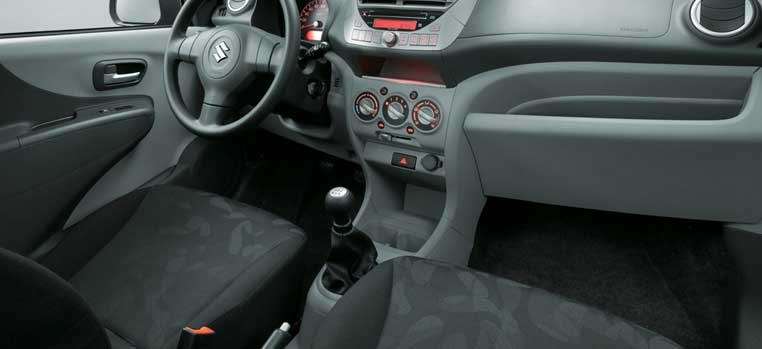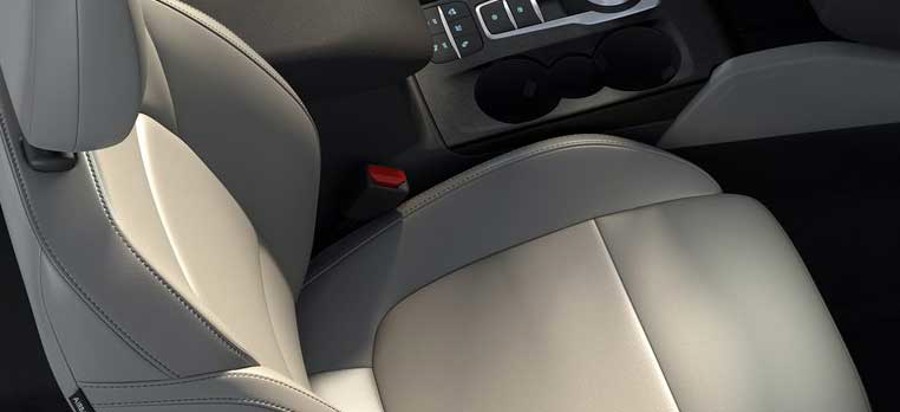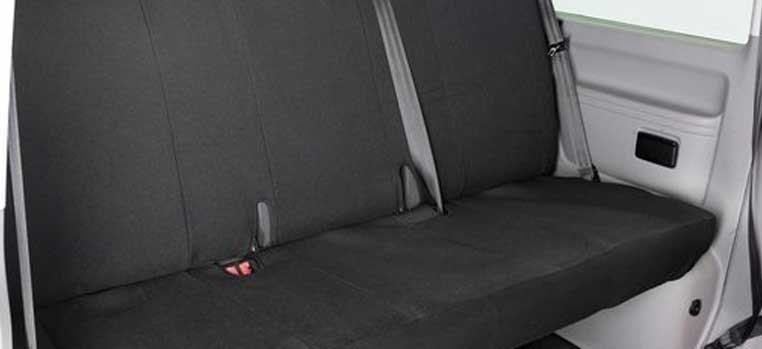For the majority of people, the interior is one of the most important things to consider when getting a new car, because at the end of the day that is what your going to spend most of your time commuting to work in. We often get asked for specific seats before specific colours on personal leases and business lease customers. You could end up spending hours a day inside of a car every single day.
Of course, you want your car to look great, but having comfortable seats and an advanced infotainment system can make or break for many drivers. One thing we thought would be important to cover; are all of the different types of upholsterers you can have in your car; there are six different materials your car seat upholstery can be made of, all with different benefits and drawbacks. This blog has been created for you to gauge what kind of car seat material is best for you!

Nylon Car Seats
If your car has fabric seats then it is more than likely nylon or polyester. It is one of the most common car seat materials used for car upholsterers due to its comfortability, affordability to manufacturers, and it's materialistic values. It is very durable and is resistant to heat, so those hot summers won't affect you too badly.
How to Clean Nylon Car Seats
Make sure you get all the rubbish off of your seats the best you can, then use a vacuum cleaner to clean the seats. Get right into the seams and press hard to remove the little bits ingrained with the vacuum. Then use an upholstery cleaner, spray onto the seats and go over with a soft-bristled brush. Next, rinse the area with warm water with an old rag or tower and finally use a microfiber cloth to make sure the area is dry, and you're good to go!
Pros: Cheap, Durable
Cons: Porous, Less Comfort, May be seen as basic

Vinyl Car Seats
Vinyl is another common upholstery featured in many cars because of its affordability and is preferred by many drivers due to being ridiculously easy to clean and maintain. It became most commonly used just after the 2nd world war as it advanced with plastics technology and looks fairly similar to leather material even though it is far from it. The material itself is not very porous so dirt and dust won't easily take over the seats, and if it was, it is relatively easy to clean up anyway!
How to Clean Vinyl Car Seats
You can usually just wipe vinyl upholstery with a damp cloth to clean it or use a standard hoover to pick up any loose dirt and residue. Very rarely will you need a specific cleaner to use.
Pros: Cheap material, comfortable, breathable
Cons: Can get hot in the summer as it absorbs heat, can easily be damaged, not as good as leather.

Leather Car Seats
As many drivers know, having leather seats is a luxury if you can afford them. They are usually included in premium car trims as it is an expensive material to use for something most materials can do. The smell of leather is usually associated with new cars and it is a porous material meaning that the seats stay cooler in the summer than that of vinyl. One of the drawbacks of leather upholstery is the damage caused by sharp objects; it's a tough car seat material to damage, but if damaged with a key or something sharp, it can be really difficult to fix.
How to Clean Leather Car Seats
Cleaning leather is by no means an easy task. You have to take care of what products you are using to clean the leather as the wrong products could end up damaging it in the long-run; giving it a rugged and faded appearance.
First off, you need to check whether or not the seats have any perforated areas, as if water or any product of sort got into the holes it could cause damage. Then use a vacuum/hoover to suck up any loose dirt that is trapped in the material without scratching the leather. After that, use a microfiber cloth and leather cleaner or some commercial cleaner and wipe down the leather. Make sure you regularly keep on top of cleaning your seats to prevent wear-and-tear of your seats.
Pros: Premium, Comfortable, Visually Appealing
Cons: Expensive, difficult to repair, Maintaining it

Faux Leather Car Seats
Faux leather or artificial leather is a car seat fabric that is intended to look and feel like real leather but doesn't have the same cost as the real thing. It is being more commonly used these days in car upholsteries due to its affordability and positive attributes like being easy to clean and also looking visually appealing. It is a god-send for many drivers who can't afford normal leather but like the feel and look of it.
How to Clean Faux Leather:
Be sure to use a feather duster to get rid of any debris on the seat such as loose dirt and dust and follow up with a vacuum. Then use a cloth and diluted soapy water to wipe the seats down before drying them off with a dry cloth or rag.
Pros: Cheap, Easy to clean, Waterproof
Cons: Does not breathe as standard leather does, can be punctured easy, can get hot in the summer!

Alcantara Car Seats
Alcantara is a suede-like car seat material that is made from 68% polyester and 32% polyurethane and is considered one of the most premium upholsteries that you can get in your car. You will find Alcantara covering the seats, part of the trim and occasionally steering wheels as well. It was developed way back in the 1970s but has become more popular than ever in the past decade or so due to its comfortability and beneficial attributes. It is very durable and great looking, hence the reason as to why so many higher trims and expensive cars feature it; however you have to be willing to pay the price for it...
How to Clean Alcantara Car Seats
Like most upholsteries, it is important to keep on top of cleaning your seats as much as possible, so that they don't fade and become worn looking. First off, make sure you do not use leather cleaning products for Alcantara. It is best to use a mild detergent and a soft brush to pick up any loose dirt in the seats. Then use a damp cloth with a suitable Alcantara cleaning product to wipe the seats and finally wipe down with another dry cloth or a dry sponge to pick up any residue.
Pros: Comfortable, premium, visually appealing.
Cons: Expensive, Gets Dirty Quickly, Can Fade Quickly

Polyester Car Seats
Polyester is a material called microsuede, which feels and looks similar to that of normal suede and is very similar to Alcantara, but not as 'premium'. It looks very appealing, however, it is a tough job to clean due to polyester picking up dirt quite easily. If you're one to clean your car every six months then it is probably best to steer clear of polyester due to how easy it can get damaged and become dirty, other than that it is quite luxurious.
How to Clean Polyester Car Seats
Use a gentle fabric cleaner specific to that type of material and a damp cloth, and gently rub the seats. Avoid making them too damp as in the long-run, water can damage the seat and in fact stain the seat.
Pros: A cheaper alternative to Alcantara, comfortable, good-looking
Cons: Prone to runs and pulls, damaged by water (close windows when it's raining)
What is the best car seat material?
There is no definitive 'best' car seat material as each one suits different people's needs and budgets. However, based on the above information we have given, you probably have a decent idea as to which would best suit you. For those who want a more premium feel to their car and have a bigger budget, Alcantara and leather seats are a good option due to their comfort and attractive looks. For those who have a smaller budget or aren't fussy when coming to choose their upholstery in a car, Faux leather or polyester are also good options as they mimic similar effects to the premium materials but at a cheaper cost.
If you want the absolute cheapest then nylon car seats are the way to go.
Car Interior Upholstery Protection Products
Car interior upholstery protection is something that many drivers use to keep their seats protected and less prone to damage and dirt. It is essentially a product that can be sprayed onto the seats to provide an invisible barrier for the seats to prevent lasting damage from spillages amongst other things that can damage the material. These products can be used as required, it is best to use these products on softer fabrics like cloth due to wear and tear from fidgeting whilst driving and so on. For leather upholsteries, it may prove pointless as the surface can just be wiped. As a disclaimer, using these products is not required and in some cases, excessive use may discolour the material so they should be used at your own risk.
